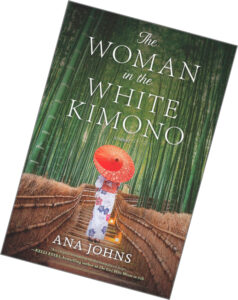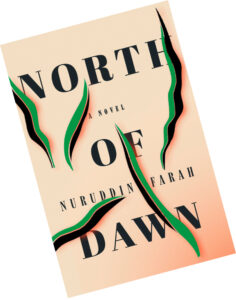

We’ve been uplifted, and the icing on the cake was the calm, confident, graceful gold medal-winning demeanour of Neeraj Chopra. So young, so dignified in execution and victory. Then came news of some people ‘celebrating’ the defeat of the women’s hockey team in the semi-final. They stood outside the Haridwar home of a player and hurled offensive remarks against the family, apparently ‘protesting’ the presence of dalits in the Indian team. Yet, this team is quintessential India: a representation of the myriad-hued multitude that is this nation.
The package of books laid out today is, in a way, like the Indian women’s hockey team — each selection is unique, and together they convey a sense of belonging in different ways. Importantly, each voice sings its own song. The Woman in the White Kimono by Ana Johns, based on the true experiences of the author’s father, unravels the story of the central character, Tori Kovac, whose father dies, leaving behind a life-changing letter for her: she has a half-sister in Japan. Tori’s search for this sibling is the crux of this debut novel. Admittedly, it is not always great writing, but the story is emotional and evokes images of Japan that seem almost Indian. That’s the thing about ‘real’ stories, even when fictionalised — they bring you home.
The second book — they’ve been listed in random order, no preferences intended -— is The Dutch House by Ann Patchett. Slow, unremarkable, emotionless, ‘yaar, nothing happens!’ — these were some of the comments in our book club. But everybody agreed the writing was lucid. The book is named after the house in which the central characters live. The mother runs off to India, leaving bereft her husband and two children, Maeve and Danny in the care of housekeepers. Eventually, the father remarries, bringing Andrea and her two children into the narrative.
It’s not as if Maeve and Danny particularly love their house, but to Andrea the house is a trophy and any previous thing connected to it, unpalatable. She orders M and D to leave. This is about as dramatic as the novel gets as it goes on to explore relationships: between people, between people and things; people and memories; the past and the present; between hope and expectation. The writing compels you to read every word and, especially if you have a ‘house’ in your personal history, reflect upon it and the stories that may lie hidden in its walls.
You wouldn’t be off the mark if you thought ‘Hamlet!’ upon reading the name Hamnet by Maggie O’ Farrell. This is a story inspired by Shakespeare’s son who died young; four years later, Shakespeare wrote Hamlet. Rooted in fact, it dramatically reveals a broad canvas of sixteenth century England even as it tunnels deep into details so minute you hear every breath exhaled, feel the juice ooze from plums, hear the scratch of every word paper. Read for yourself: ‘Hamnet starts awake, the mattress rustling beneath him. Something has woken him — a noise, a bang, a shout — but he doesn’t know what. He can tell, by the long reaches of the sun into the room, it must be near evening. What is he doing here, asleep on the bed? He twists his head and then he remembers everything. A form lies flat, next to him, head twisted to one side. Judith’s face is waxen and still, a sheen of sweat making it glimmer like glass. Her chest rises and falls at uneven intervals. Hamnet swallows, his throat closed and tight. His tongue feels furred, ungainly, too large to fit in his mouth. He scrambles upright, the room blurring around him. A pain enters the back of his head and crouches there, snarling, like a cornered rat.’
Nothing is known about the real Hamnet but he is heroed here, in ‘a great work of imaginative recreation and a great story,’ writes Dominic Dromgoole. ‘It is also a moral achievement to have transformed that young child from being a literary footnote into someone so tenderly alive that part of you wishes he had survived, and Hamlet never been written.’ In the end, you cannot help but wonder how on earth Maggie O’Farrell created this masterpiece.

Right now, though, I am under the spell of North of Dawn by Somali writer Nuruddin Farah: ‘As his eyes move from the face of a Caucasian woman to a man with Middle Eastern features, and from a woman in a sari to an African man in an agbada, Mugdi is sad that scenes such as this, where a variety of races congregate at a public arena, are unavailable in Mogadiscio. As he watches the expressions on the faces of some of the Norwegians, he can spot some whose gentle features stiffen, turning ugly when they come face-to-face with a Muslim woman in full Islamic gear. Maybe a woman with a Muslim headscarf is seen as a threat, whereas a sari-wearing woman is viewed as unusual and fascinating in this part of the world. Mugdi remembers reading about a judge in the state of Georgia in the US who barred a woman with a headscarf from entering his court. Would the same judge turn away a Jewish man with a yarmulke or a nun in her habit?’
It is very much a story of our times, beset with conflicts and confusion particularly around ideas of faith and fundamentalism. Farah tackles the subject head-on by premising the story on the experiences of a Somali couple, Mugdi and Gacala, having escaped from troubles in their country, now well-adjusted to living in Oslo, Norway, with their two children. However, when their son grows up to become a jihadist, and dies in a terrorist attack, and they are forced to look after his wife and her two children, everything changes for them. As The Oprah Magazine observed, ‘The political becomes personal in this beautifully affecting tale.’ In tone, tale and telling, it’s completely different from the other books laid out today.

The fifth book is a completely different cup of tea. This is Cousin Bazilio by the Portuguese novelist Eca de Queiroz, in English translation by Margaret Jull Costa. Although first published in 1878, it never feels dated. Richly descriptive, languorously sensuous, and exuding the languidness of siestas on humid afternoons, as in: ‘Luiza yawned and stretched. It was such a bore having to get dressed! She would have liked simply to be dozing off in a pink marble bath full of warm, perfumed water! Or else to be rocking gently in a silken hammock, with all the windows closed, listening to music! She shook off one slipper and sat looking fondly at her small, milk-white foot with its tracery of blue veins, thinking about all kinds of things …’
In its own way, this tale parading cuckolds and mistresses, hypocrisy and deceit, blackmail and sentimentality, is also founded on a yearning to belong — to somebody, to a set, to high society. The characters materialise before your eyes and even if you have never visited Lisbon, the city comes alive.
Lucky you; so many books to choose from! What you read, how much, and when, is your privilege. What matters is that you take a shot. After all, like in sport, it doesn’t matter if you win or lose, it’s how you play the game.
The columnist is a children’s writer and senior journalist.





